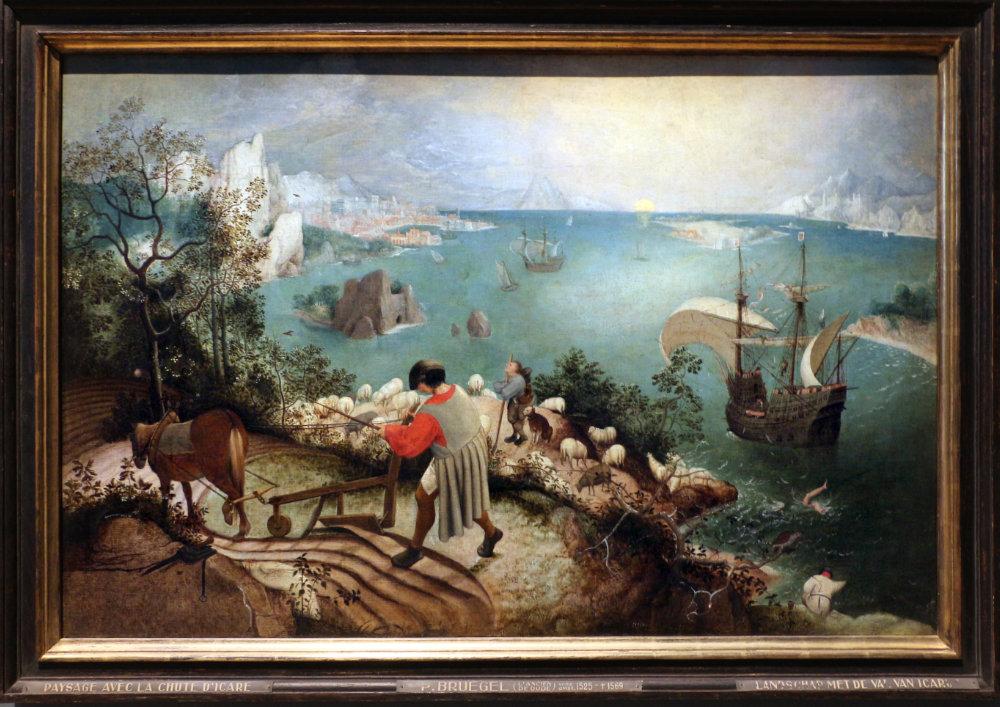There were two versions of the subject (the one not illustrated here, a wooden panel is also in Brussels, in the collection of David and Alice van Buuren; it also shows Daedalus in flight), although scholars are of the opinion that it is are two copies of a lost Bruegel original. The works have a special place in Bruegel’s oeuvre because they are the only known paintings on a subject from classical mythology. The story from Ovid’s Metamorphoses is traditionally understood as a lesson on hubris, human high spirits. Because Icarus is getting too close to the sun, his fall is inevitable: the sun’s heat has melted the wax that attached the feathers to the pair of wings that Daedalus had built for his son. Already here Bruegel uses a compositional method that would become a constant in his work: the protagonist appears in a rather remote position, in this case only his legs can be seen, which protrude dramatically from the water kicking. The rest of the picture is taken up by the wide coastal landscape. In the foreground, a sailing ship plows through the waves without the crew noticing the deadly events. Three classic figures from Ovidian mythology can be seen on the mainland (from left to right): a farmer, a shepherd and a fisherman. They, too, seem unimpressed by the fate of the unfortunate. The farmer continues to carefully plow his furrows with the plug, perhaps a nod to the Dutch proverb, “You don’t hold the plug for someone who dies”.
Only the shepherd seems to notice the misfortune that is befalling Icarus for a moment, because he looks up at the sky, maybe just to watch the crows.
Brüssel, Musées Royaux des Beaux-Arts
Sources: Russo, William Dello. (2011) Große Meister der Kunst [Great Masters of Art, Bruegel]. Prestel, Munich, pp. 36-37.



